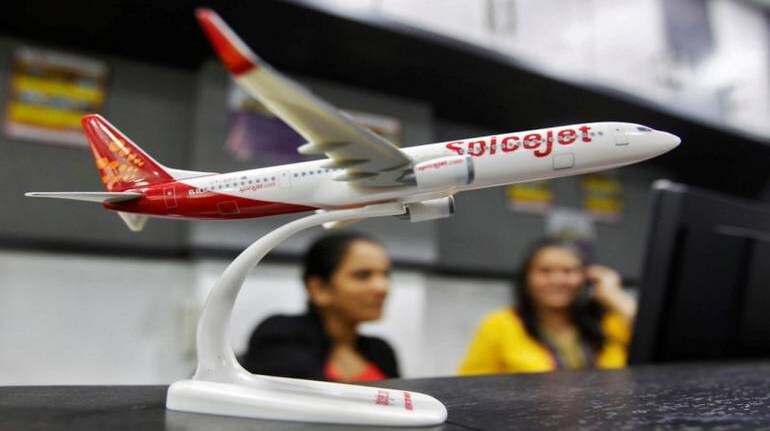



SpiceJet Limited, until recently the country’s second largest airline, has posted a loss of Rs. 562 crore for the quarter ended September. Depending on how one sees it, the outcome is either good -- or bad. Sequentially, the loss was lower than the one it posted in the June quarter because traffic improved, but when compared to the year-ago quarter, the loss worsened. In normal times, the comparison is always to the year-ago quarter; in the post-COVID era air traffic patterns have been decoupled from past performance and become tied to the trajectory in cases of the disease. As passenger traffic returns to pre-COVID levels, the airline’s curtailed schedule could have a negative impact on its finances.
SpiceJet started the 2021 winter schedule with 2,995 weekly departures, according to the Directorate General of Civil Aviation (DGCA). Compared to the winter of 2019, this marks a 30.61 percent drop. The airline has also been plagued by issues related to funding with the last few weeks seeing sporadic protests at airports by some teams of employees over issues the airline claimed have been settled. Recently, SpiceJet turned its cargo arm into a subsidiary to unlock value, but the unit posted a loss in the fiscal second quarter.
Moneycontrol explains what the latest numbers mean and what the future may hold for SpiceJet.
What do the numbers say?
Jet Airways suspended operations in April 2019. The same month, SpiceJet operated 11,983 domestic departures, at an average of 399 flights per day or 2,796 flights per week.
Subsequently, the government linked additional slots at airports to induction of capacity and
SpiceJet and Vistara inducted aircraft which were flying with Jet Airways. While for Vistara, this was a new sub-type, for SpiceJet it meant making most of the situation. The airline has been a B737 operator with B737MAX on order, 13 of which had already landed before the aircraft was globally grounded. Former Jet Airways pilots were available and the demand- supply mismatch meant that the airline could look to induct the B737s for a shorter period with adequate staff readily available and willing to join SpiceJet. As SpiceJet kept inducting aircraft, 30 of them joined the fleet eventually. This took the departures up to 16,639 in December 2019, at an average of 536 per day or 3,757 per week. This was an increase of 34.3 percent over April. The airline further added flights and saw 16,693 departures in January 2020.
And along came COVID-19...
The Indian aviation juggernaut came to a screeching halt by the end of March. The raging pandemic, which initially looked restricted to China and a few parts of the world, soon started spreading in India. The country went into a lockdown and the rules and regulations were different when aviation restarted after a two- month hiatus.
The government came in with a new set of rules when aviation re-started. This included a capacity cap, which has now been withdrawn, and a fare band, which continues. This was largely expected to help the ailing carriers tide over the crisis and not go belly-up.
What is the current status?
At 2,995 departures, the airline is only 7 percent more than what it had before it went on an induction spree of former Jet Airways aircraft! The pandemic has literally put the airline back to pre-April 2020 era. The capacity deployment also has an impact on the market share.
While SpiceJet was the undisputed number two in the market for a while, the title is no more with SpiceJet, having been claimed by Air India this year. With (the takeover) of Air India, the Tata group (also part-owner of Vistara and the Indian unit of Air Asia) will be the undisputed number two in Indian skies, cornering one-quarter of the market, while one-half of the market continues to be with IndiGo. This leaves SpiceJet a limited market to make its mark in and presence felt.
Tail Note
SpiceJet wasn’t in great financial shape pre-pandemic and the situation may have only got worse from there. Yes, the slump sale of the cargo subsidiary has ensured that its negative net worth is now around Rs. 750 crore, compared to over Rs. 3,000 crore a few months ago. These figures are for the books; what matters is hard cash when vendors come knocking on the airlines asking for dues to be paid. The airline has planned to raise Rs. 2,500 crore via a qualified institutional placement (QIP)..
With the price of oil doubling from last year, IndiGo, and Go First have an edge over SpiceJet as a very large portion of their fleets is made up of the new generation NEO family of Airbus planes unlike SpiceJet, which has not been able to fly the Boeing MAX even after the Indian regulator cleared it for operations.
Will a combination of sale and lease-back income from the B737 MAX, funds raised via the QIP and the payment of final compensation by Boeing for the grounding of the B737 MAX help the airline make a comeback?
Discover the latest Business News, Sensex, and Nifty updates. Obtain Personal Finance insights, tax queries, and expert opinions on Moneycontrol or download the Moneycontrol App to stay updated!
Find the best of Al News in one place, specially curated for you every weekend.
Stay on top of the latest tech trends and biggest startup news.